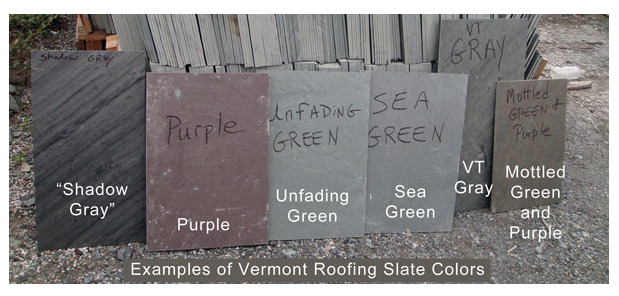Just a Little Background Info:
While driving through the area, I spotted this historical building. Although I was unable to find much information on it, I did learn that it is currently being used by “horizon Utilities” , and this is the Stroud’s Lane Substation (1225 Main Street West). The interesting part of this building, was not necessarily, the stone entrance, and well laid stone walls, but the unique characteristics of the roof.
What is Slate?
Slate is a fine-grained, metamorphic rock, which was formed when heat and pressure transformed an original shale-type sedimentary rock composed of clay or volcanic ash. Slate is the finest grained of all metamorphic rock, and usually contains minerals, such as white mica and quartz that are highly resistant to water absorption and weathering. With the addition of various amounts of hematite and chlorite, has produced slate in a variety of different colours Slate is frequently grey in colour, but also occurs in other colours, including shades of grey, from pale to dark, purple, green or cyan (a greenish blue colour).
Slate as a Roofing Material
In the North America, slate roofing dates to the 18th century; during this time, slates were imported, usually from Wales. After 1865, slate of varying quality, durability, and color was widely quarried throughout New England, from Vermont to Virginia. Slate remains in use today.
Though slate is very expensive, it’s probably cost-effective over the potential lifespan of the house itself, since it typically lasts for a century or more. In Victorian times, the colors available—dull shades of black, gray, red/purple, green, and blue—were frequently combined to form complex geometric patterns using a variety of butt-end shapes—diamond, square, fish-scale, round, hexagonal, and more. These shapes and colors remain available and in use today, but manmade slate is more common now, though not as durable as the original stone.
Slate Colours

Slate Patterns

In order to claim this EarthCache as a find, you must first send the answers to the following questions to the CO at the top of the cache page:
1) While standing at the posted coordinate, describe what percentage of the slate roof is dull shades of black, gray, red/purple, green, and blue.
2) How would you describe the tiling pattern on the roof: diamond, square (plain), fish-scale (variegated), round (octagon), or hexagonal?
3) Given the age of this slate roof, how would you describe the condition of the slate tiles? Do you believe the roof will need to be replaced soon?
4) How many slate tiles are in the lowest row of shingles on this roof?
Source of Information:
http://www.slateroofcentral.com/identify.html
http://parkscanadahistory.com/series/saah/slateroofing.pdf